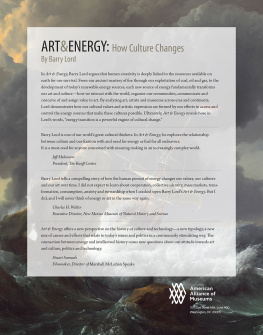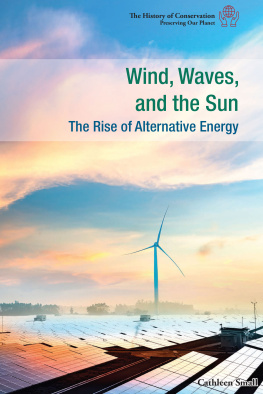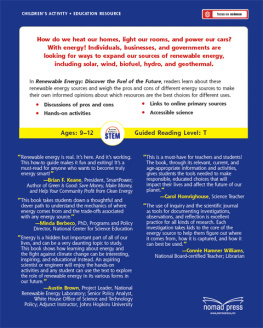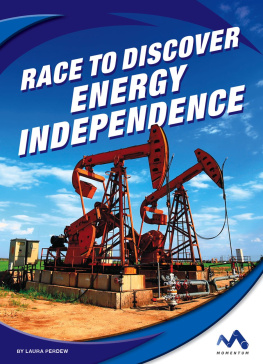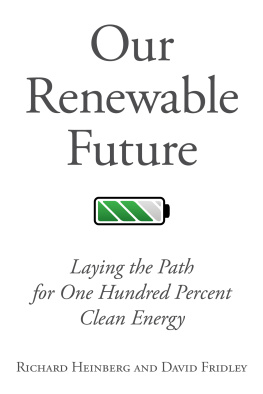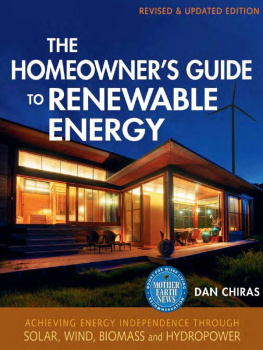ART & ENERGY
How Culture Changes
Barry Lord
Edited by Gail Dexter Lord and John Strand
For Gail,
who is on every page
Table of Contents

Ludolf Backhuysen (Dutch, 16311708), Ships in Distress off a Rocky Coast, 1667. Oil on canvas, 114.3 x 167.3 cm. National Gallery of Art, Washington, DC. Alisa Mellon Bruce Fund.
Prologue
Transitions
I grew up with coal. A truck poured it down a chute poked through the basement window of our house. I shoveled it into the furnace in the middle of our cellar. After shaking the ashes from the grates, I shoveled them into a bucket and hauled it out to be taken away. I didnt have to be told that coal brought a work ethic with it.
It was in oil-powered Arabia in the 1990s that I first began to connect art and energy. Growing up in the decade following World War II in Canadas industrial city of Hamilton, oil for me was something that came from a gas station or from those odd machines bobbing up and down in farmers fields in parts of southwest Ontario. But for my contemporaries around the Arabian Gulf, the discovery of oil had transformed their culture from that of a semi-nomadic trading society to modernity.
My wife and partner Gail remembers the pride with which a Bahraini friend drove her into the desert to see the site where the first commercially viable oil well on the Arabian side of the Gulf was discovered in Bahrain in 1932. It struck Gail and me as unusual that a modern woman with a Ph.D. in education from a prestigious American university would see this as a place of cultural significance.
Just a few years later, having helped to create the National Museum of Saudi Arabia and several master plans for museums in the more famous cultural district on Saadiyat Island that includes the Louvre and the Guggenheim Abu Dhabi, we were introduced to the place where commercially viable oil was first discovered in Saudi Arabias Eastern Province in 1938. Here today at nearby Dhahran is the headquarters of the worlds largest energy company, Saudi Aramco. Some of the companys officers had invited us to help them realize a multi-faceted cultural center on the very site (The Source) of that first wellhead, which everyone affectionately knows as No. 7. Named the King Abdulaziz Center for World Culture, this great building designed by the Norwegian architectural firm Snhetta is intended to contain the first public theater in Saudi Arabia, the first public cinema, the first childrens museum, several museum galleries for natural and cultural history and art, space for exhibitions from around the world, a unique innovation center for lifelong learning called The Keystone and a memorial to well No. 7, which is to be a major contemporary art commission.
It occurred to me then that the Arabian Peninsula shows us the effects of a relatively recent but dramatic energy transition. The discovery of commercially viable oil around the shore of the Gulf in the 1930s coincided with the collapse of the world market for natural pearls, which had been the staple of international trade for Bahrain, the Emirates and the Eastern Province of Saudi Arabia. The oil boom began to affect Arab peoples lives of my generation from the 1950s forward.
I found myself contrasting the effect of oil on culture in the Gulf with that earlier energy transition to coal that created the Industrial Revolution. In both cases the energy transition required people to work at getting the new fuel: coal forced the majority of workers underground for extraction and disciplined them to maximize production, whereas oil employs relatively few workers in the extraction process; most are well above ground in offices and labs. But the biggest change to be experienced around the Gulf is in the throbbing, air-conditioned shopping malls that have replaced the old souks. The revolutionary change that came with coal was a culture of production; oil and natural gas stimulated an equally dramatic culture of consumption. The experience of this contrast was the beginning of the journey that has led to this booka journey that tries to illuminate how culture changes and the defining role that energy plays in that change.
Everyone knows that all life requires energy. But we rarely consider how dependent art and culture are on the energy that is needed to produce, practice and sustain them. What we fail to see are the usually invisible sources of energy that make our art and culture(s) possible and bring with them fundamental values that we are all constrained to live with (whether we approve of them or not). Coal brought one set of values to all industrialized countries; oil brought a very different set, not only to Arabia but to the entire world that is today partially or predominantly dependent on oil or natural gas as a primary source of energy.
If you are reading this text on a printed page, it cannot have been published and shipped to you without the oil-based or coal-based energy needed for those activities. If you are e-reading it, you are all the more dependent on electricity that may have been generated by hydroelectric power, but far more likely was produced in a coal-fired, nuclear or natural-gas-fired electrical generating station. Lots of fossil fuels have been burned to get this book to you. I may not approve of the culture of consumption that comes with oil, or the anxiety that attends the use of nuclear power in France, where I am writing this. But I must use them if I want to do anything at all. All cultures depend on energy, and all energy sources bring with them certain values and implications shared by everyone who uses them.
The energy of slaves provides the most obvious example. People living in slave-holding societies accepted mostly without question the premise (which I call a cultural value) that some people are qualified to be slave owners while others have no control over what is done with their own lives, nor even with their childrens lives. Abolitionists were eventually able to overturn this widely held belief, but only after a new and more powerful energy source (coal) had radically changed everyones ideas about who we are and how we relate to each other in our work and our lives.
A more recent example is the widespread belief of the 1950s and early 60s in the possibility of continuing indefinitely with unlimited abundance and economic growth, contrasted with the widespread agreement today that both that assumption and the world it predicts are unsustainable. The previous widely held belief was a fundamental assumption of the culture of consumption that accompanied the then-ascendant power of oil and gas as our energy source, whereas the equally universal belief that such a world is unsustainable follows from the culture of stewardship that accompanies renewable energy, the transition that is happening today. This book explores the roots of such value changes and the role of culture and the arts as we adapt to these changes.
I seem to have always been involved in cultural change. I started in theater, working in summer stock as a teenager and serving an internship as an apprentice actor at Canadas Stratford Shakespearean Festival in 1961. In the 60s I was publishing poetry in small literary magazines, with some of my poems gathered together in a chapbook entitled subject\object (weed/flower press, 1967). I have taught art history in various universities. But I found my greatest satisfaction working in museums, a profession that unites the excitement of show businessthe buzz of opening nights for new exhibitionswith the creativity of artists, the scholarship of archeologists, historians and scientists.

